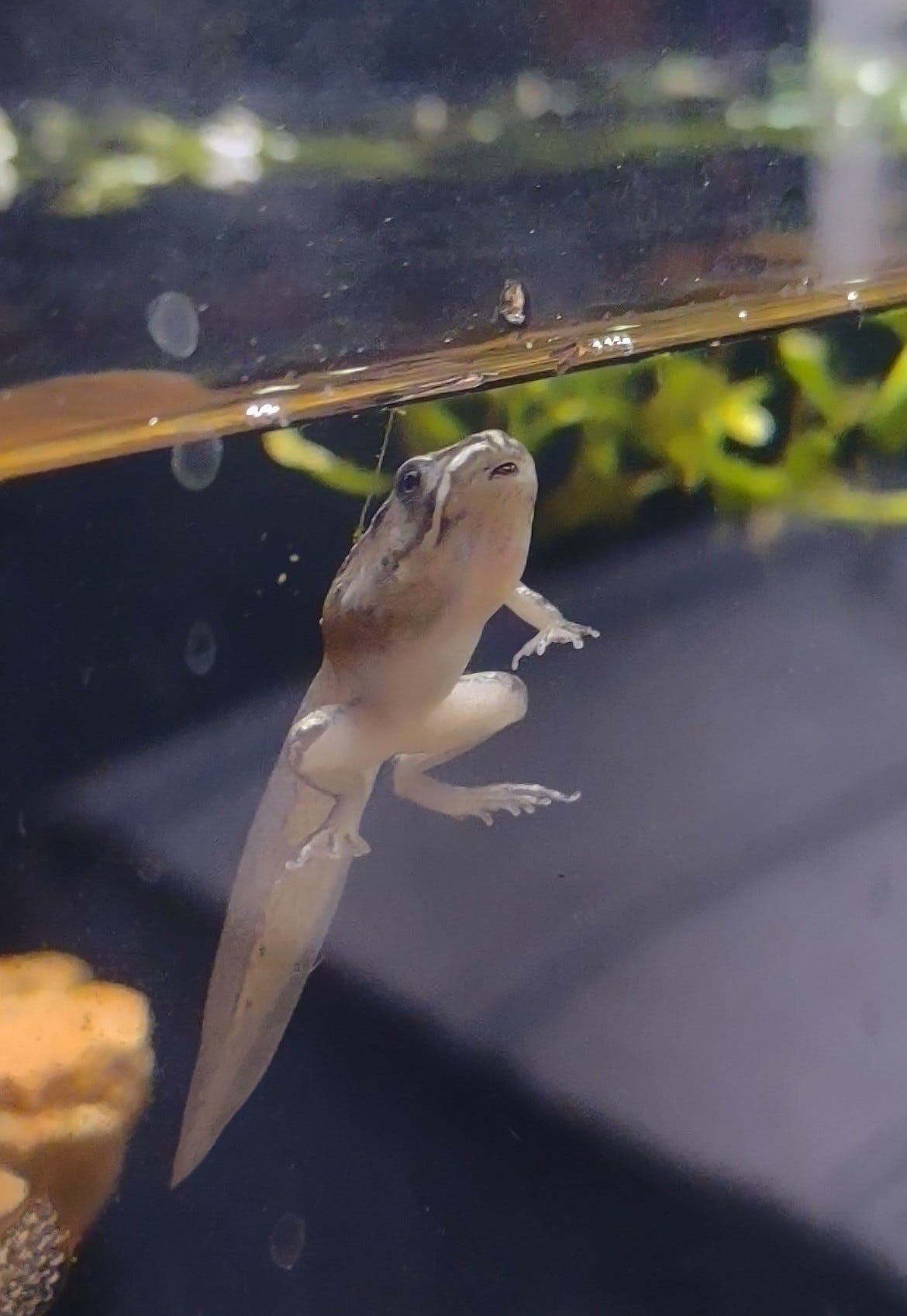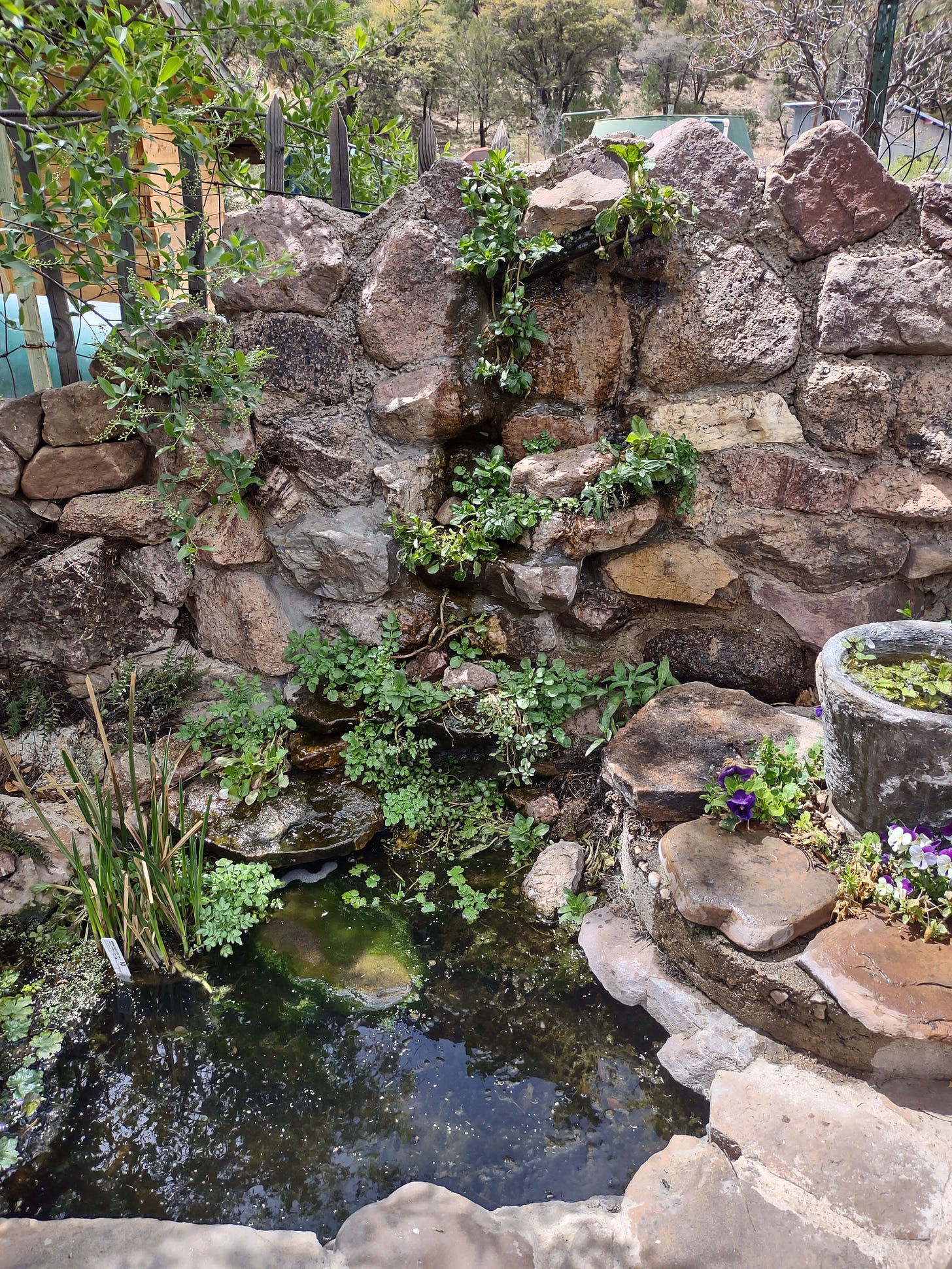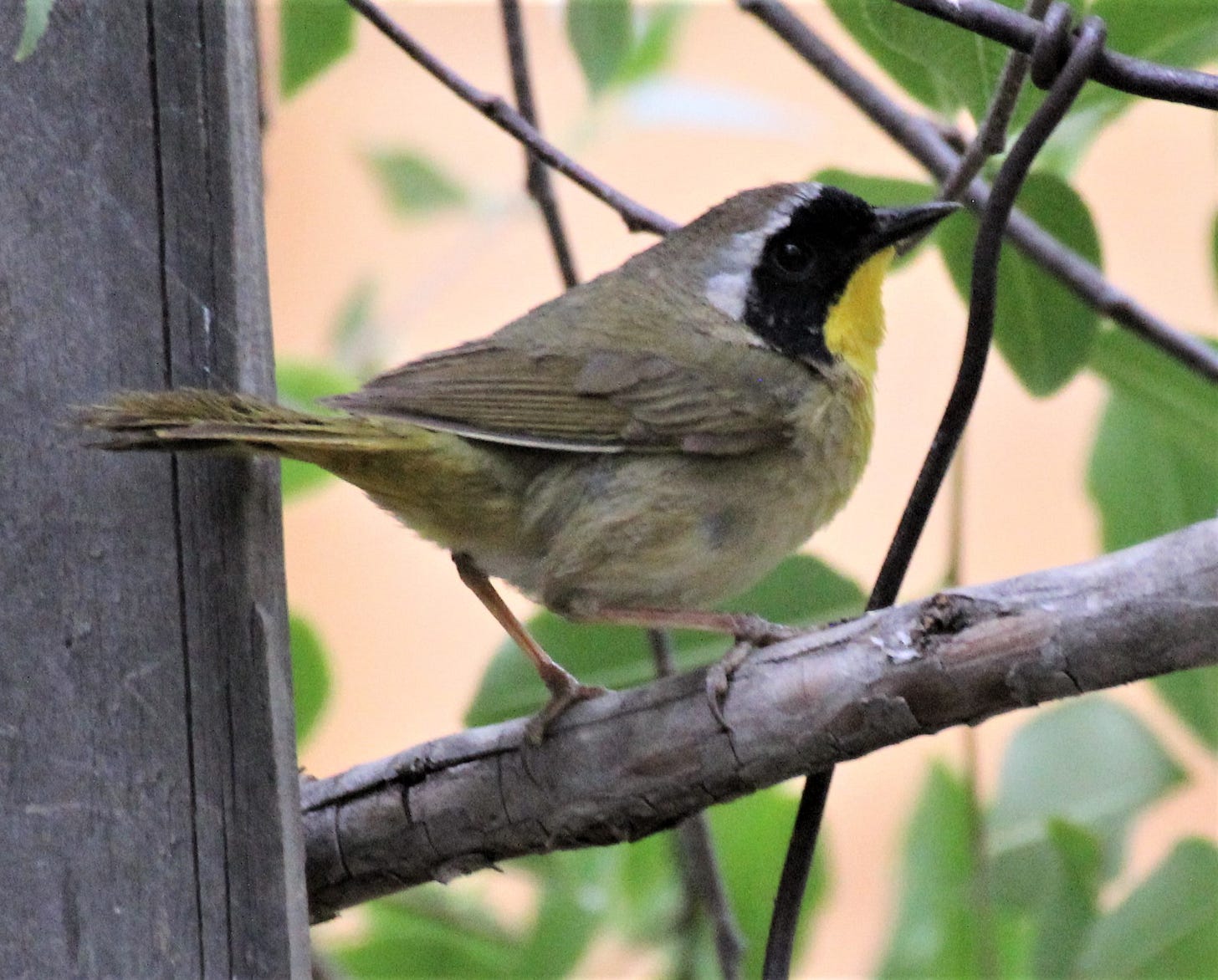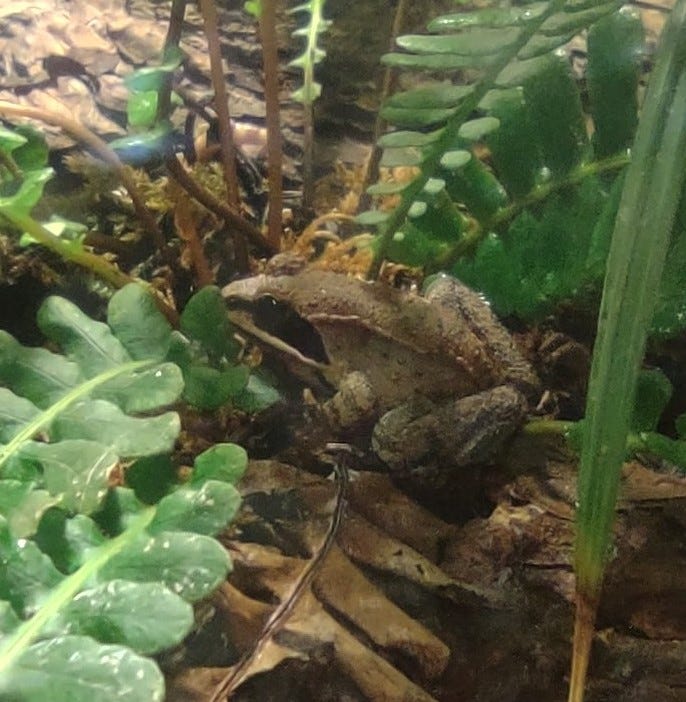
Day 434 of the Pandemic (May 26, 2021)
I finish setting up a terrarium for the wood frogs, which have been popping out front legs one at a time for weeks now, altering their aquatic form for one more terrestrial. I plant the habitat with sword ferns and sprouts of western red cedar from Oregon, tucking in mosses and liverworts from eastern Arizona’s White Mountains. Jurassic Park under glass. No theropods or sauropods but frogs have an ancient pedigree going back 200 million years. In fact, new research says that almost 90 percent of frog species today owe their existence to the meteor impact that wiped out the dinosaurs. At 6700 described species, frogs are among the most diverse of vertebrates. Wood frogs, I imagine, will be here long after the planet sheds itself of its current failed experiment with intelligence.
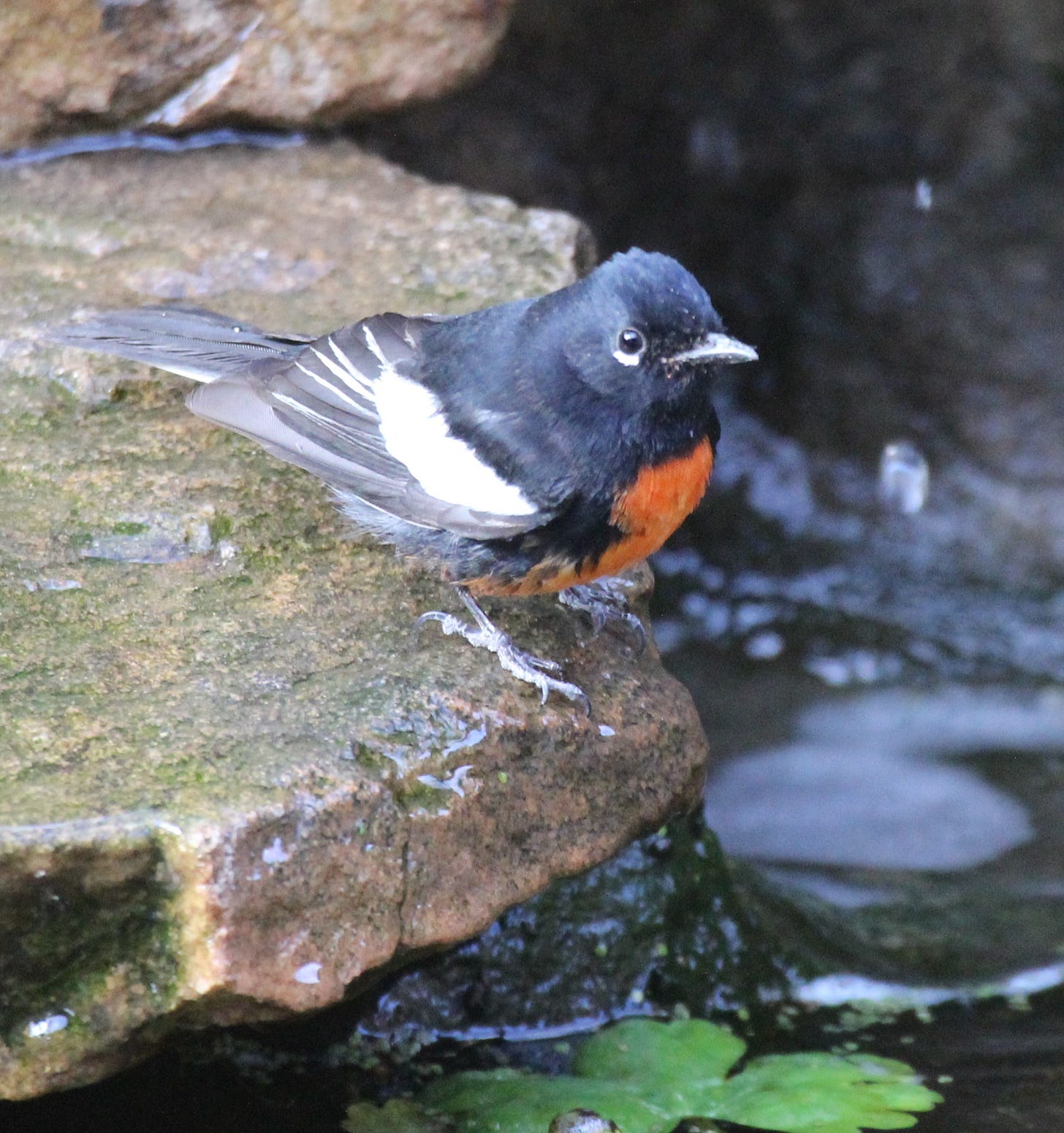
In the afternoon, I watch the Covid fountain for movement. A gratuitous visit from a painted redstart tops out the yard at 97 species for the month, more additions being unlikely with the rising temperatures. When a bit of yellow catches my eye, I notice the bird’s black mask. I reach for my camera and feel empty space. I left it in my office. When the bird ducks into the blooming monkeyflower mid-fountain, I jump up and run for the camera, but upon my return the bird is gone.
Common yellowthroat is a new bird I had added a couple weeks ago when one materialized at dawn in the apple tree. I’ve seen them dozens of times along the San Pedro River and at Whitewater Draw, even as far away as Yachats, Oregon, and Alamos, Sonora, but never in the yard until recently. It’s like the tiny warbler that’s widespread across North America waited for me to be paying attention.
I wait for an hour and the bird returns, this time pausing long enough for photos. Yard bird #154.

Thanks for subscribing! Soon I’ll be posting in “real time.”



